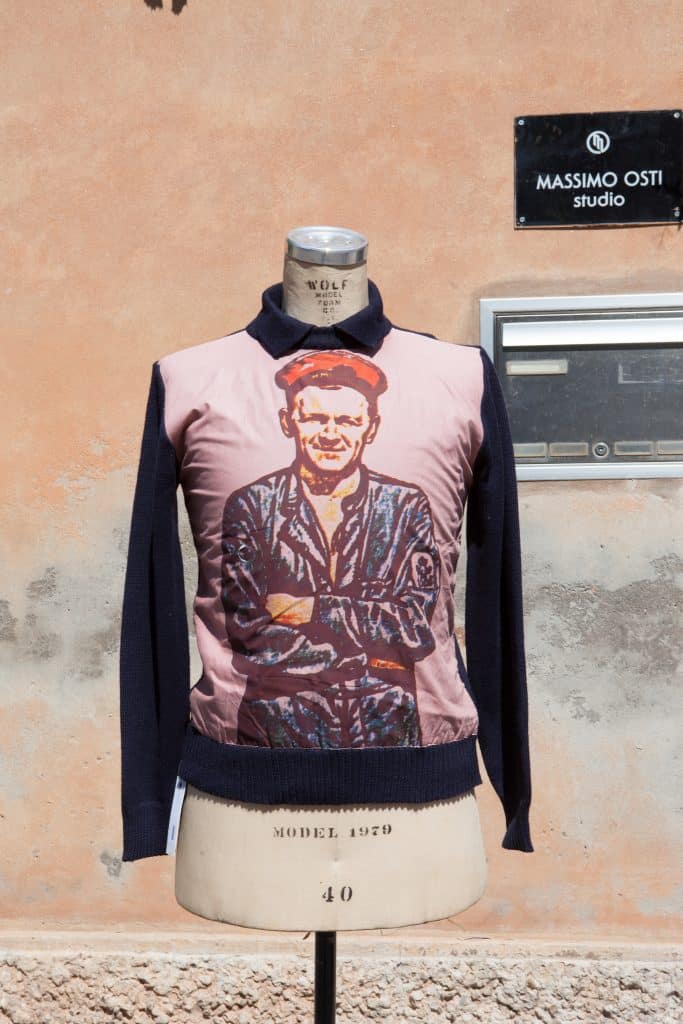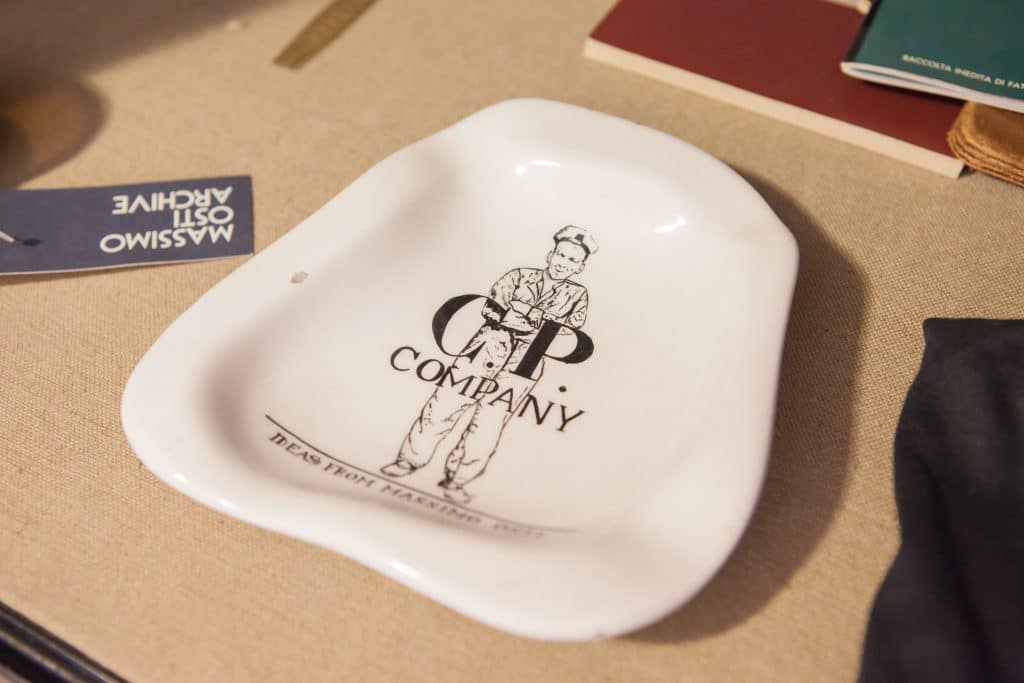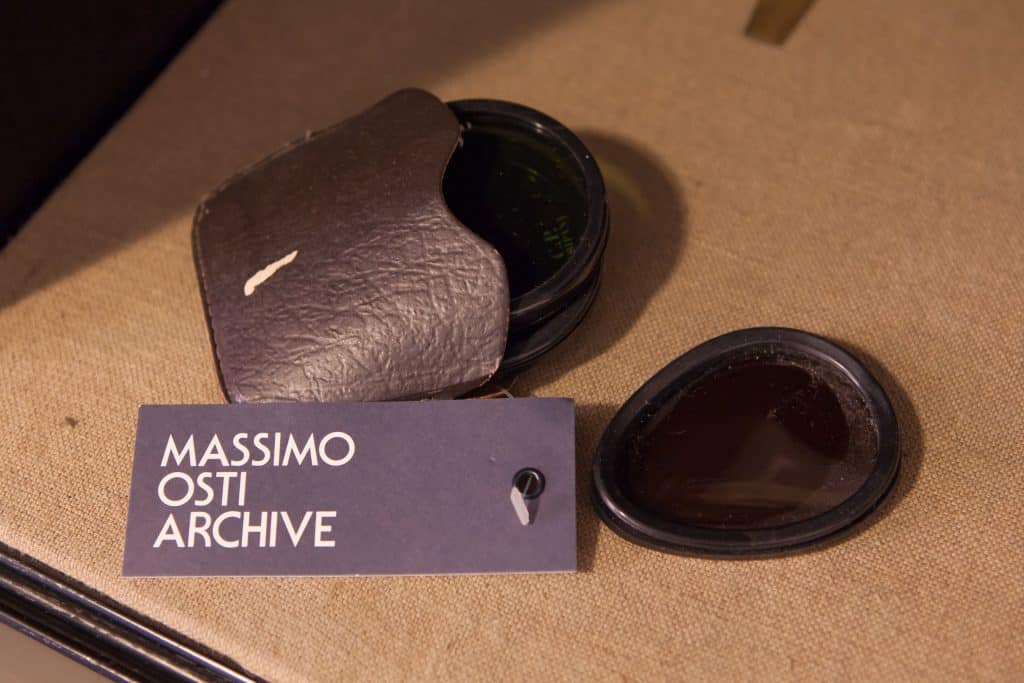Raiders of the (L)Osti Archive. First published in Proper Mag 19, Summer 2016
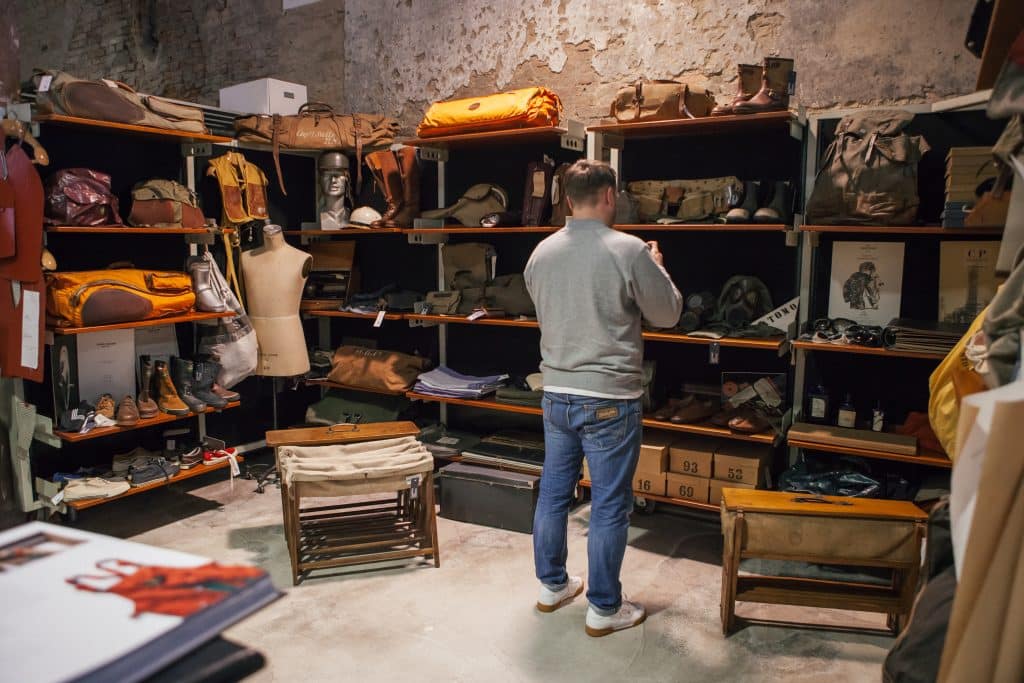
The mythical Osti Archive in Bologna is talked of in hushed and reverent tones, almost as if a lost civilisation lives there, reclusive but all wearing lots of nice clothes. Do you know anyone who has actually been there though?
We do.
Us.
While we were there we cordially conversed with Lorenzo Osti, son of Massimo and now the head of marketing for C.P. Company.
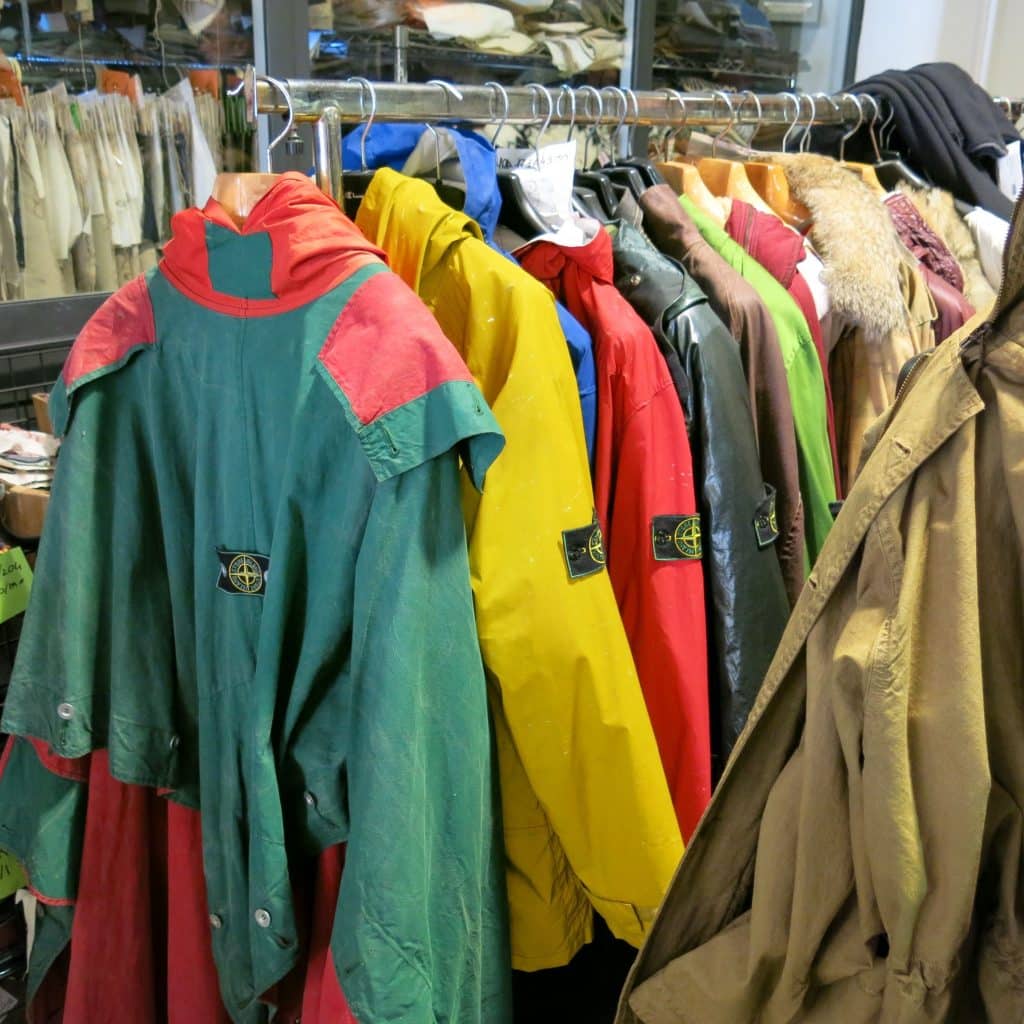
Can you tell us what it was like to grow up in Bologna and in the Osti household?
Wow…
For sure it was a big privilege. I was just a kid, but the house was always full of people. The lifestyle was different from now. Everyone was doing exciting things and socialising was very different. Every night we had anything up to ten people for dinner and it was almost an open house. When I was about 7 or 8, I never wanted to go to sleep because something exciting was happening every night. The people visiting were mainly friends but all of them were artists or writers or designers.
I have very nice memories of my father when he was working. He left at 7am and came back at 9pm every day, so I never spent much time with him at home. Sometimes I’d visit him at work and it was magic. Imagine a kid in a studio full of garments, machines, dying and cutting equipment and I was free to take almost everything. So I went home with bags full of garments, it was like Disneyland.
At the same time, I was always taught to understand the value of what we had and how lucky we had been to live this kind of life, so from my point of view what I always try to do is earn what I have on my own, rather than being handed it without my own merit.
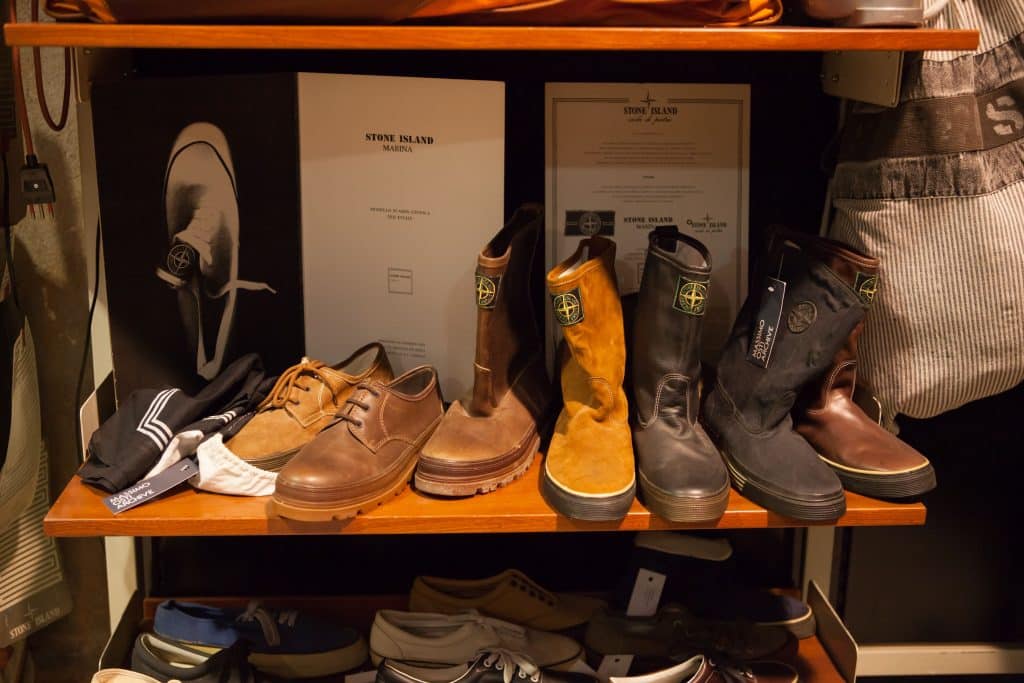
Were you the best-dressed kid in Bologna?
Oh, I don’t know!
When I was 13, the Bologna version of the Paninari was the Zanarini. It was a huge trend in Italy, involving El Charro belts, Timberland Boots and sometimes Stone Island. It would have made sense for me to be involved but everybody was dressing this way and I wanted to be different. I was 13, I just dressed in black and white, with a blazer. A white blazer and black shirt like a mafioso. I look back and it’s quite funny.
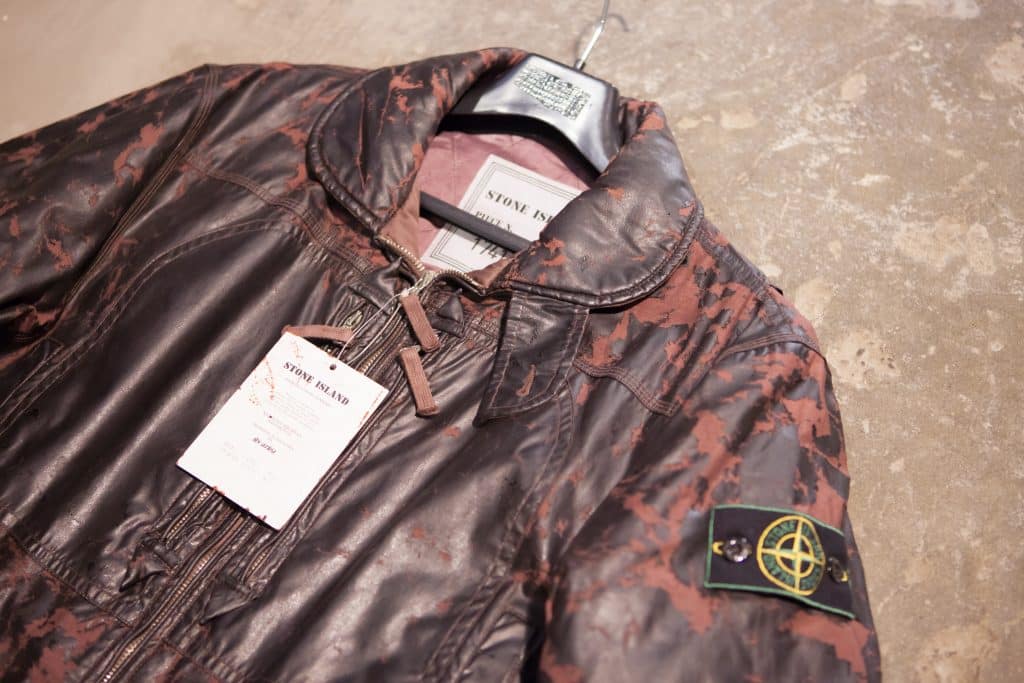
What did your Dad think of the paninari and that look?
Of course we have to thank that movement, because this archive and the history of this work is thanks to people like them. But for me, I never really liked where everyone dresses the same. I think this is a very Italian thing. I was always excited when I visited London and other places because people had more individuality. In Italy, when a trend comes, everybody looks the same. You see that and want to be different.
If you dress the same as everybody does, you feel safe, and actually, you don’t think about what you’re wearing. Italians have good taste but we’re not so strong on individuality.
You say that, but in England we all think the Italians dress so much better than us! Maybe there’s an element of saying the grass is always greener on the other side?
Yeah probably everybody looks at other yards and they look greener. What I liked when I came to London when I was younger, you have punk and other trends. Here people dress in a safe zone.
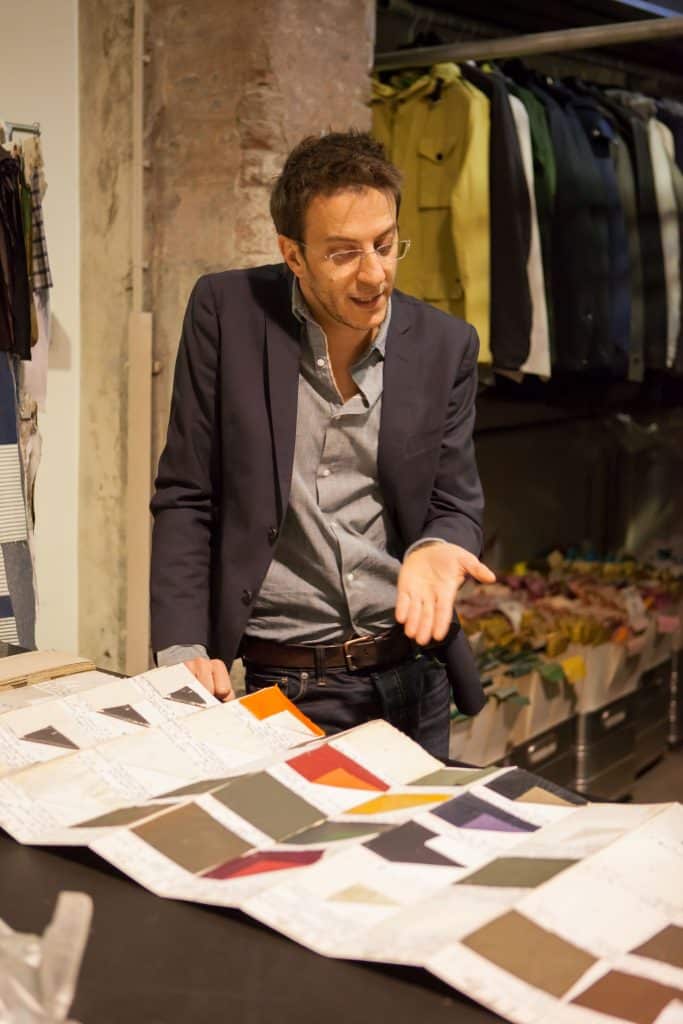
What kind of place is Bologna?
Bologna… I’m very in love with this place. Everybody asks me why I didn’t move abroad or to Milan but I didn’t want this. Bologna is a tricky and sexy town, I like to come from this place. Of course, it’s small but it’s very open-minded. Perhaps the most open-minded in Italy. We have the oldest University in the western world and Bologna is a crossing point for a lot of people. To get to or from Milan or Venice for example, all streets pass here. We are open with immigrants and we’re used to seeing people of a different culture. The attitude is positive and this is what I like. I don’t find this as much in bigger cities.
In my 20’s and 30’s, it was not so exciting to live in Bologna. Berlusconi was in charge and there was corruption at the top… there was a lot of frustration. Now, there is more joy on the street, but it’s always been a lively town. There are 400,000 people, with 100,000 people who are students. That makes it a fun place.
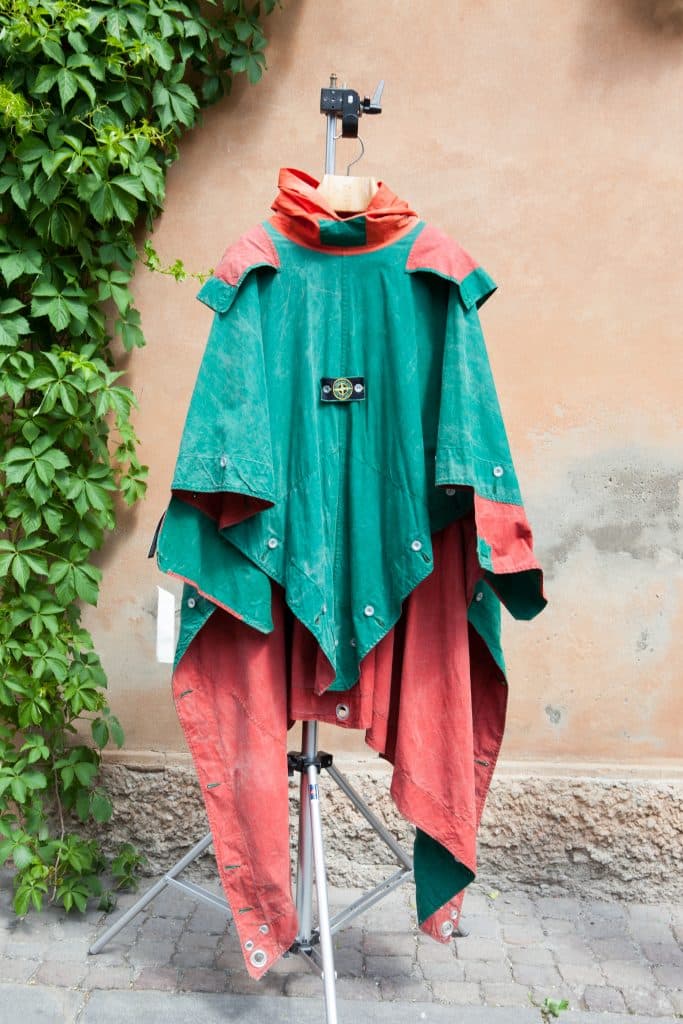
Manchester, where we are based, is the same. It benefits the area to have a population turnover and a lot of young people being educated there.
This is true, and the city always benefits from this. We’re very ahead in civil rights and Bologna was the first city in the world to abolished slavery, in the 14h century, 500 years before the U.S.A. Even in the middle ages, it was unacceptable here. Everyone was equal and it’s something that you breathe in the town.
Bologna has always been left-handed, politically. Once in the 90’s that changed for four years, but apart from that, since the war, it has always been left-wing. It’s not by itself a good thing because complacency happens and the politicians became lazy when there is no change. But when the right won, I was happy because it made the left improve and stopped them sitting down so much.
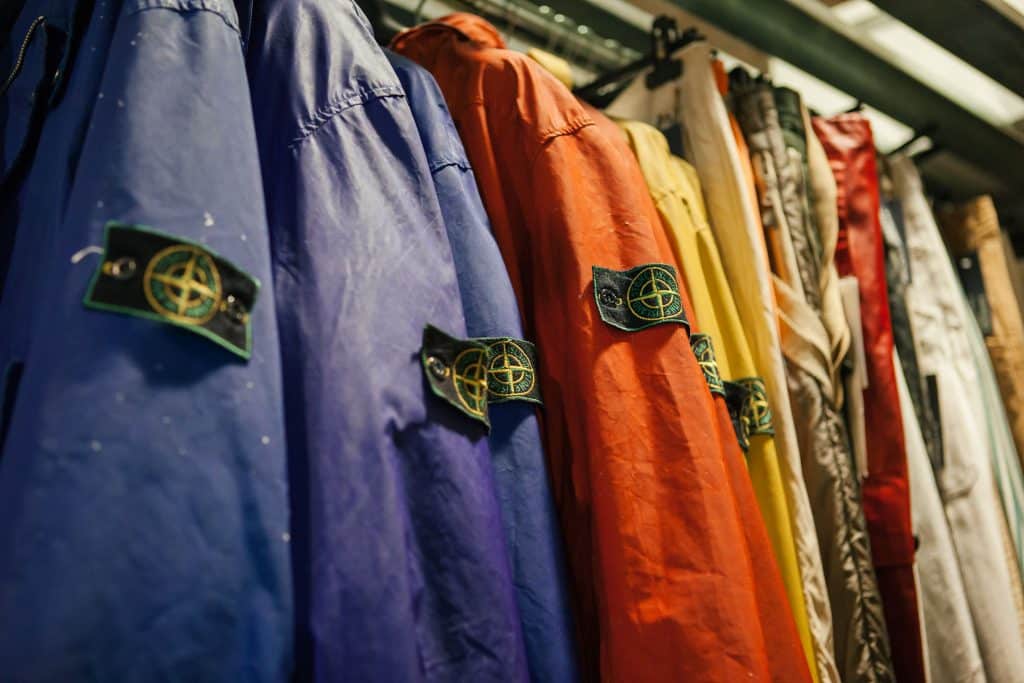
Were you always interested in fashion?
First of all, I was sure I didn’t want to work as a designer as a job. My father was too big a personality to work with. When I was 19 I started to work in the fashion industry. While in university, I was in charge of the ST95 brand.
In that workplace, everybody would always tell me I was right. I would question it and say I’m 21 and in my first job, how can I always be right? This experience with Massimo Osti Productions helped me realise I was only ever going to be seen as the son of the boss. Immediately I realised that was how it’d be, so I made the decision that I needed to find my own path.
Moreover, I’m more passionate about design than fashion, but I grew into appreciating fashion. I cannot imagine a garment, I can only say if I like or don’t like something.
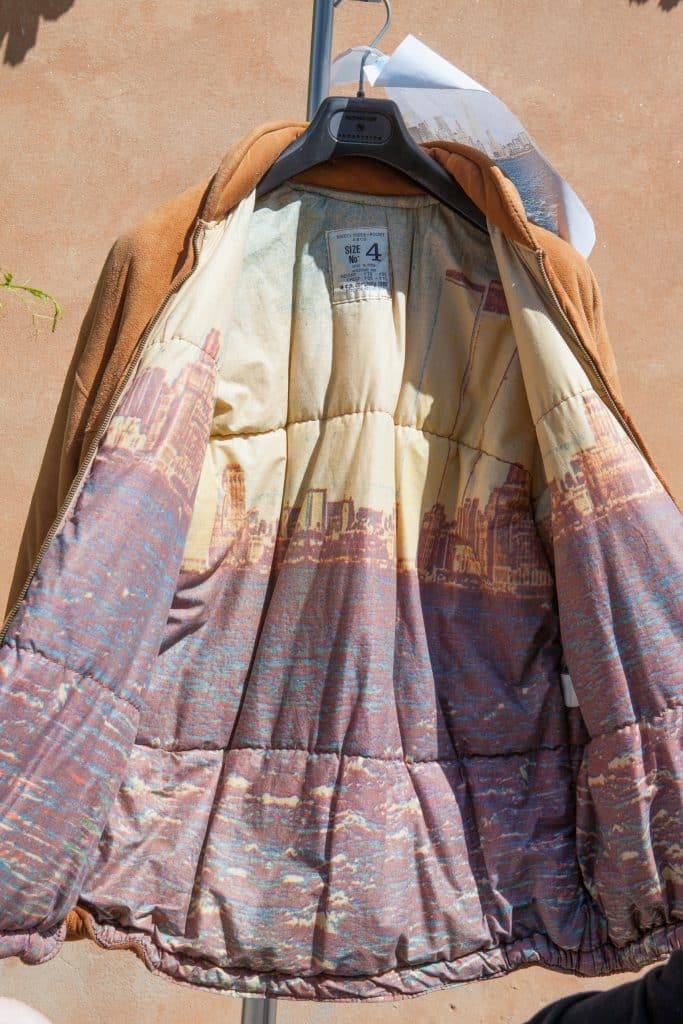
What was the atmosphere like in the studio with your father?
Wow, sometimes it was tough, really tough! My father had a bad character in work. He could be sweet and nice outside of work and people would love to spend time with him. People who worked with him were the opposite and would describe him as terrible. He could shout a lot. I saw many people crying in the studio! Most of the time the atmosphere at work was tense. The fact is he was very demanding on all aspects, always challenging. When people didn’t meet his requirements he would go hard on them. Actually, I think that brought out the best in most people. But if you ask the people who worked with him they may not agree!
“A friend and collaborator of my father was wrongly arrested because he had the same name as someone the police were looking for. He took the blanket from the jail and gave it to my father because he knew he’d appreciate the fabric.”
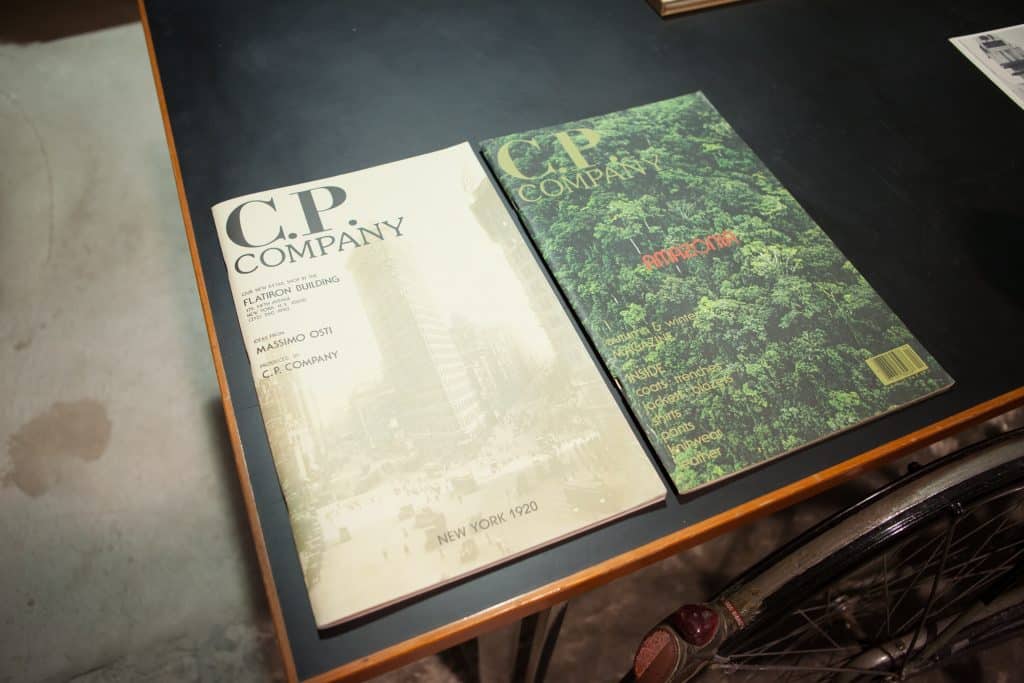
There are some great stories about Massimo taking inspiration from strange places, like shower curtains and biscuit tins and his friend’s graduation ring.
Yes, all of those are true. He was always curious, looking around to take something to embody in his work. When I started working with him on ST95, I made the first fashion website in Italy. My father was excited by the technology.
He’d always try to push forwards.
Another habit he had was every time my father met someone he would examine their garments, always touching to see how it was made. It wouldn’t matter who they were.
I think most of his innovations came from taking things incidentally from other fields. He made the jacket which is heat reactive for example. Most inspiration came from military. He used to say everything was there for a function and that’s why he likes it.
Do you remember the wool inner layer of many Stone Island jackets? It was inspired by a prison blanket. A friend and collaborator of my father was wrongly arrested because he had the same name as someone the police were looking for. He took the blanket from the jail and gave it to my father because he knew he’d appreciate the fabric.
Massimo’s brands had a real resonance with British subcultures. Was he aware of this?
Honestly, he wasn’t. He was always working and very focused on what he was doing. I became aware much later in around 2000. It’s an important phenomenon. When my father was working on C.P Company and Stone Island he wasn’t aware of outside influences. I think he would have appreciated real people who were working class and loved the garments. He would have seen they were outside of the fashion industry like my father was.
My father was travelling a lot at the beginning but later on he was always in his studio. He never saw what other designers were doing and it was something he did purposely. He didn’t want to take influence from another designer or brand. He just didn’t want to know. Usually sales agents would give feedback but he didn’t want to hear it.
People around the world wear his brands differently to in the UK.
The biggest markets for my father’s products was Italy, UK, Germany and Japan. In the UK the casual adoption was one extreme and in Japan they prefer a more classic Italian C.P Company style. The product and communication was the same. We never targeted casuals for example, it was always about the personal interpretation. Every market adopted the garments in its own way.
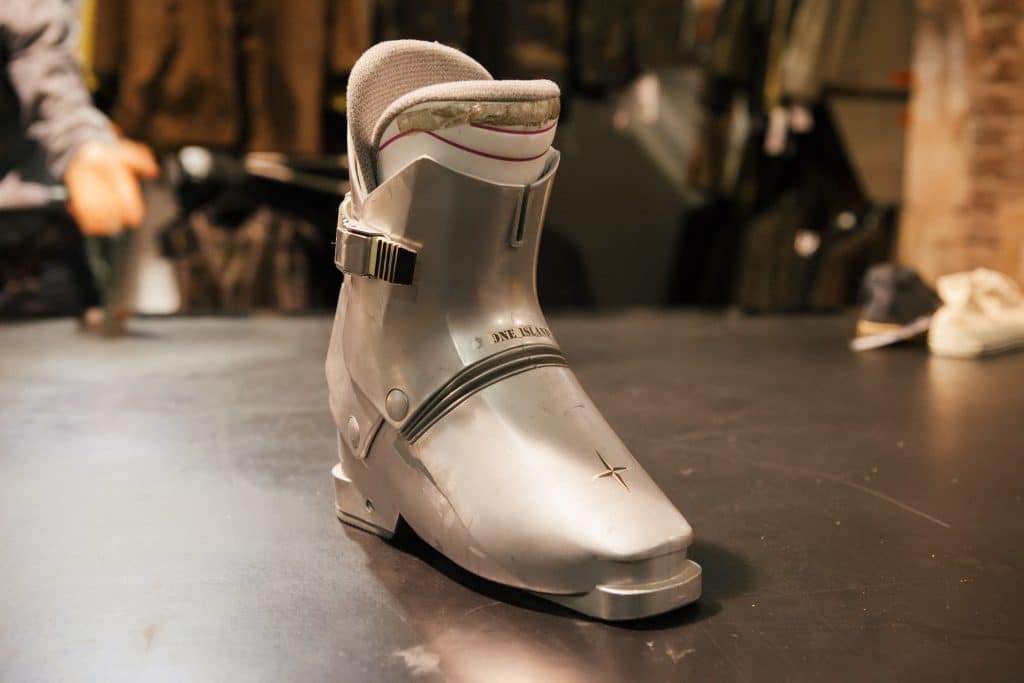
What’s your involvement with C.P now?
Of course I always followed my father’s brands from some distance. When Enzo Fusco bought the brand, he asked me if I wanted to be a designer and I told him “I’m not a designer!”. We had a small chat and then in 2013 I had an idea for a project aimed at how to present C.P Company. He liked it but in the end we didn’t do it. Two years later I heard from a friend that C.P was for sale. I was working with Peter Wang, who I met via Donrad Duncan of Ma.Strum. When I met Peter I was impressed. He’s from Hong Kong but studied in the U.S. He’s very polite and humble, always listening and very respectful. So when I knew C.P was available I asked Peter Wang if he was interested. He said he was and both parties wanted me to be involved. It took a while for me to accept. I don’t know how you say it in English, but we have a phrase in Italian when someone takes you by your sleeve and says ‘Come on, come on’. What I appreciated from Mr Wang was he had met me through my marketing work so we had an established relationship. Before being the son of Massimo I had made an impression as myself as a professional.
Obviously it was important for me to represent the family, of course, we do not hide that. But we had already worked together and now I am running the marketing team from here in Bologna. There is so much to do because in the past the brand has had so many changes of direction. My big challenge is to steer and keep the direction of the brand right.
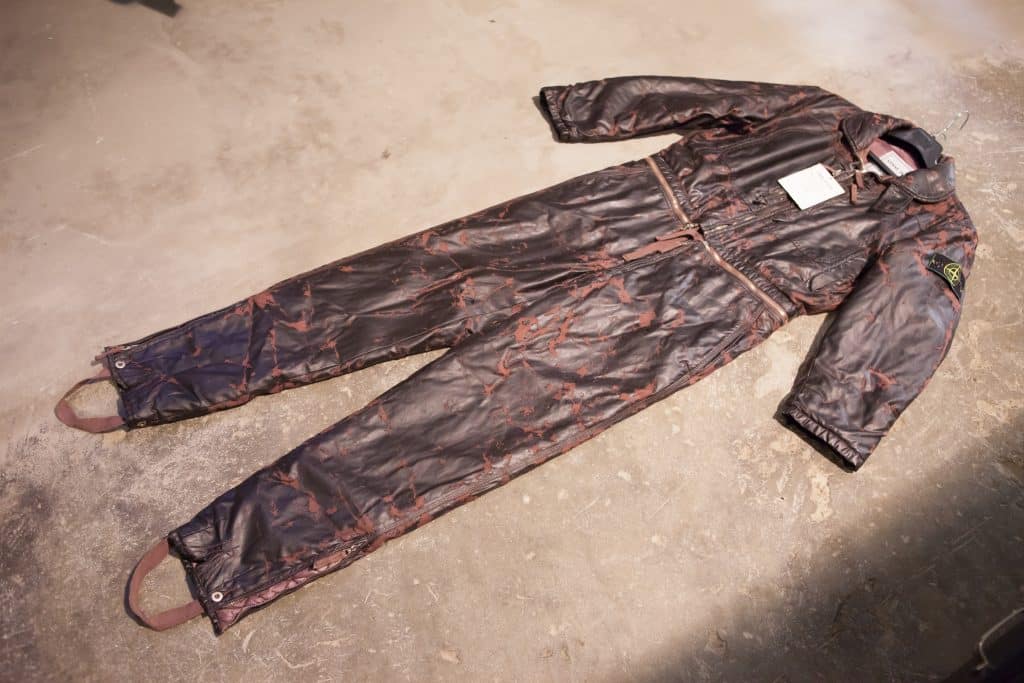
What were Massimo’s other passions?
He was always interested in sailing and boats. He liked to be at sea with silence and nobody bothering him. My main image of my father outside of work was in a sailboat. Another passion was basketball which he played when he was a child. He sponsored a couple of small teams here in Bologna. He was also active in politics. He was elected to the city council once and before that he supported some left wing candidates doing their electoral campaigns. He had many interests.
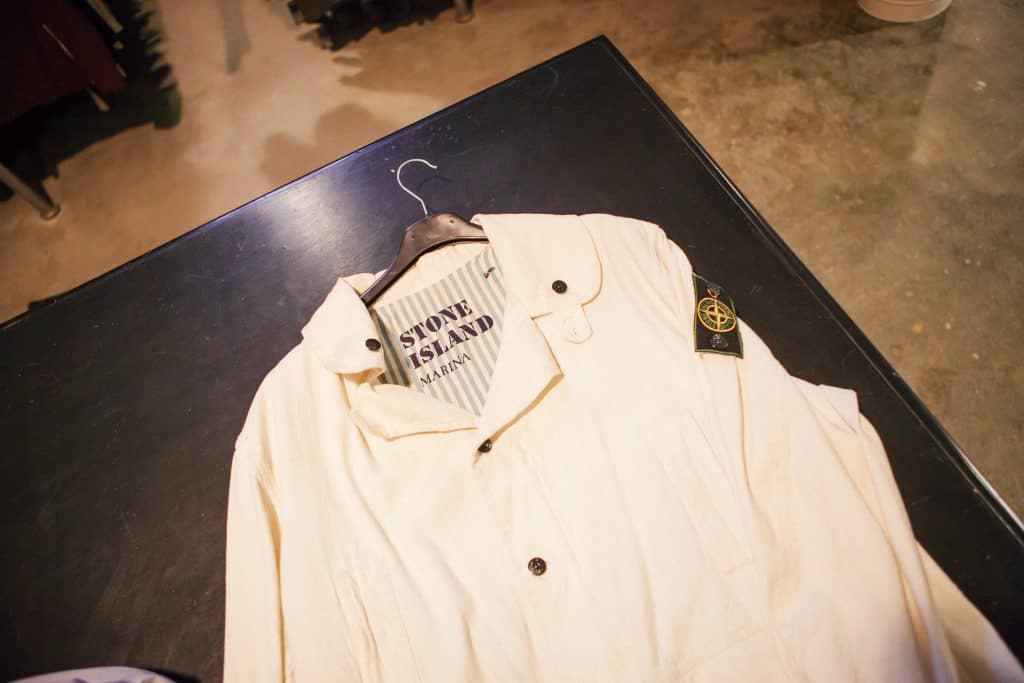
What sort of music did he like?
In our house, the Italian artist Lucio Dalla. He’s from Bologna and made a song called Caruso. He and my father were close friends and we have pictures of him wearing C.P Company and Stone Island jackets. Aside from Lucio, Roxy Music, Talking Heads and of course David Bowie. Roxy Music was the soundtrack of our house.
Good taste. What sort of music do you like?
I love all of this music I grew up with, but I’ve also loved reggae for a long time. Now I don’t have a specific reference. For a certain time I might just follow punk for a few years, then reggae or electronic music. I go through phases.
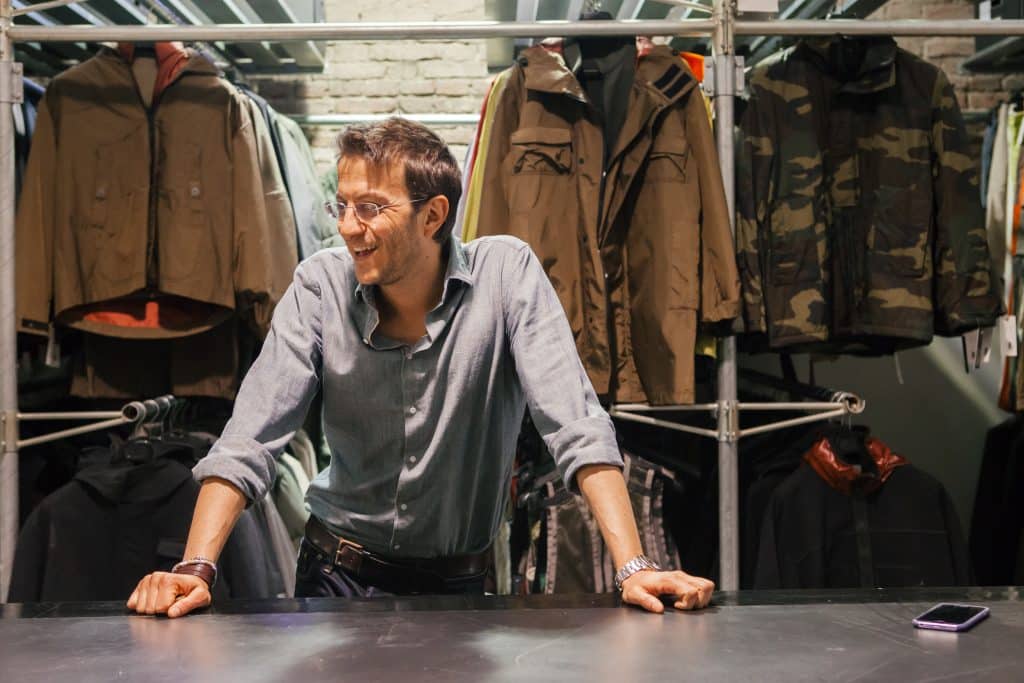
Can you tell us more about the archive project?
My ambition was to bring my father’s influence to new generations. I don’t know if Sportswear Company did it intentionally, but my father’s early work influence was faded out. We have much bigger plans for the archive, but we’re struggling to finance it. It’s a philanthropic activity. We can’t afford it otherwise it would have happened. I have a list of things I would like to do if I had all the money in the world. We have the archive here and sometimes we invite people to see. We like passionate people visiting. We also have lessons and invite students here. I tried to make a big step ahead with a museum in London. It’s a lot of money to make it happen.
What are your most treasured pieces in the archive?
Difficult question. I know all of them almost by name. I didn’t create them but it’s like asking which is my favourite son. In the past I’ve worn some of them and it’s the weirdest ones I like the most. The vintage spacesuit is a great item. The garments which influenced my father’s work are my favourites.
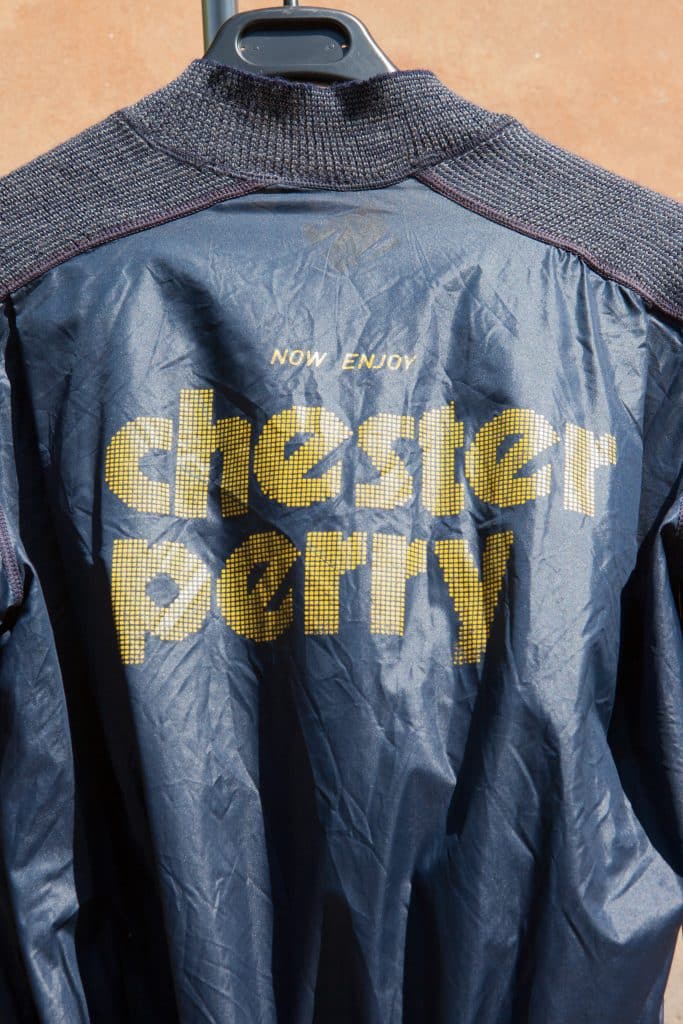
Tell us about the book? How was it put together?
With a lot of pain! Most of the work was done by my mother. She spent four full years to develop the book. Now you see an archive but before this it was just a warehouse. We didn’t know where to start from. Before being a fashion designer my father was a graphic designer so a lot of his early work relates to that and it was a good point to start from. We wanted to include the classic garments like his favourite, the Sahariana jacket and also show his methods and the working process. We went through every single item to examine if it was interesting enough for the book. We had to interview lots of people and discovering the reality was difficult as there are a few versions of each story.
The last year of putting the book together was very intense, hundreds maybe thousands of pictures were taken. It’s such a dense book, we could have made it 700 pages but we had to stop at 400. We have plans to do another book, including a discussion between the writer who created the cyberpunk genre, William Gibson and Acronym designer Errolson Hugh.
Pamela here in our office was packing all the orders and when my mother saw William Gibson had ordered a copy we realised it was the writer. I’ve read all his books so we had to check it was the same person. We wrote him a letter to say thank you and from there we talked about doing something together.
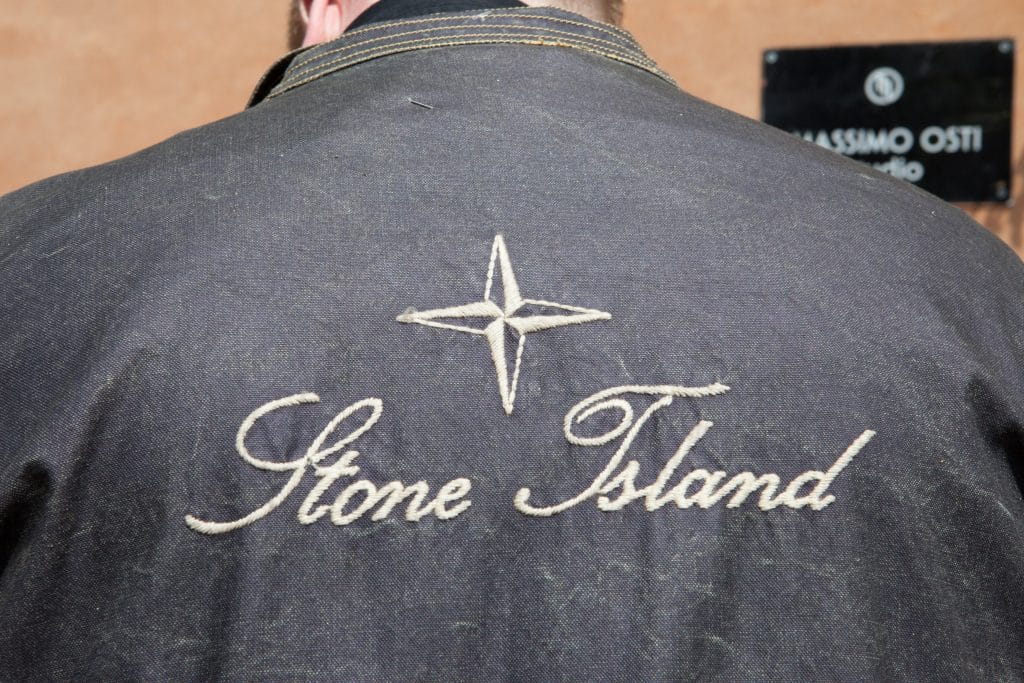
There are some amazing pictures in the last book, with Madonna and Dennis Hopper, but my favourite is one of you and your Dad. You’re wearing an amazing C.P coat.
I remember, this picture was shot by Oliviero Toscani.
What do you think of the brands which have taken inspiration from your father’s work? Brands like Ten-C for example.
I’m sure that if you say Ten-C is inspired by Massimo Osti I don’t think Paul Harvey would agree, but Ten-C is a very good brand. I love Paul Harvey’s work. He and Alessandro Pungetti are my favourite designers, along with Errolson Hugh from Acronym and Donrad Duncan from Ma.strum and EFM.
Looking into smaller projects, Fabio Cavina and Leonardo Fasolo made a good job with Nemen. Now Fabio has created Plurimus, which is another brand I like, more military inspired. Actually they’re all very small and I like small brands because they’re more pure, but the big challenge is to grow them without losing identity. For C.P for example the challenge it’s much more difficult. You have to expand the brand without losing the DNA.

